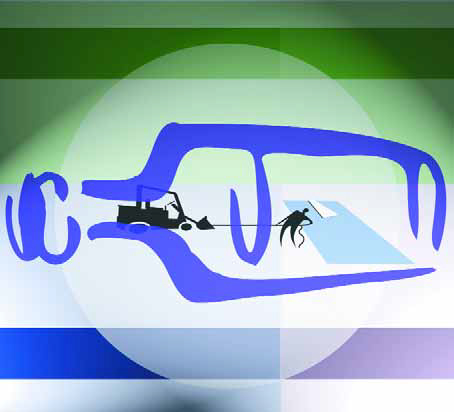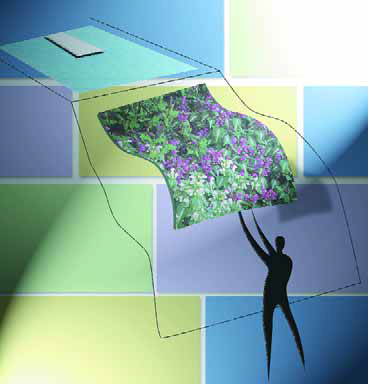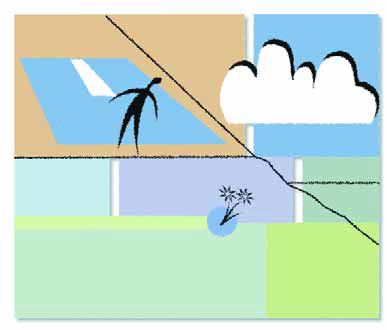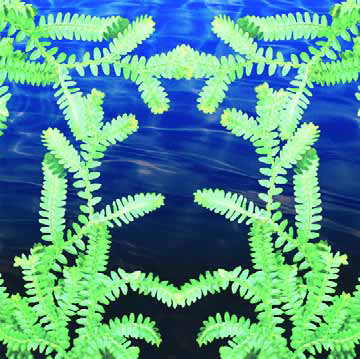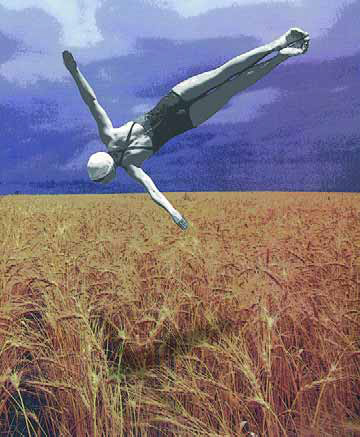plants
If you can't see potential in every backyard you walk into, then you're in the wrong business. Yes, some projects are more inspiring than others, and some spaces seem to offer you more to work with than others. Without exception, however, our clients' yards present us with opportunities to develop programs that take advantage of what's there in ways that bring balance and harmony and interest to any setting. Speaking for myself, I'm no more energized in a project than when I get the opportunity to right a wrong and replace a past mistake with a fresh, interesting design - and that was certainly the case in the project discussed in this article and in my past several "Details" columns in this magazine. The setting was special, the clients were great and I was given free rein to work with color, shape and line in vivid, interesting and even startling ways - all in keeping with their wants and desires. SETTING THE SCENE To recap information from recent "Details," this pool/spa combination with its associated decking, walls, planters, outdoor cooking facilities and private garden area are located in a narrow yard at the base of a slope in Pacific Palisades, Calif. It's a spectacular
Last time, we talked about planters, terracing and a couple other techniques for stabilizing slopes and making them look great as backdrops or foregrounds for hillside or hilltop watershapes. We left for this column the important discussion of what to plant in these spaces. In making these suggestions, I'll discuss soil-binding plants and other ground covers that contribute specific desirable qualities to landscape settings. My reasoning is simple: Although sod is a great ground cover and is certainly versatile, I believe that having a broader and more decorative
Everyone knows that hanging a pool, pond, or spa off a slope can make quite a dramatic statement, which is probably why so many great watershapers love working on hillsides. But the project doesn't begin and end with the vessel: In fact, placing a watershape on an incline also presents a range of landscape-related issues that must be addressed, whether it's a matter of aesthetics, code or safety requirements or simple
The watergardening business has exploded in North America in the past few years - so much so that it's easily the fastest-growing segment of the watershaping industry. This wave of interest in naturalistic watershapes means that hundreds of people new to the craft of pond and stream building are now out there, working on all sorts of residential and even a few commercial projects. Some of these are landscape contractors working with water in a significant way for the very first time. Others are pool contractors who've
Very often when I'm selecting a plant palette with a client, I'll hear the words, "I hate ferns." I'm not sure what it is about these botanical beauties that evokes such a visceral reaction from people - except maybe that they were overused in floral arrangements during the 1970s and 1980s? I'm not sure what's going on here, and if any of you know a soild reason for this dismissal, please educate me! For my purposes, ferns are one of the most versatile plants available. They typically prefer
What makes for a great natural-style watershape? That's a huge question - one which a great many people have devoted their careers to exploring and for which almost every one of us will have a slightly different answer. As you will see here, my own response to the question starts with even more questions about the site, my clients and the surrounding structures and vegetation - questions I ask myself as I approach each individual design assignment and decide how far
Images of waterways almost anywhere in the world are filled with gentle sweeps of free-flowing grasses swaying in the breezes or simply lazing by the water's edge. From a watershaper's perspective, these grasses are arguably the most versatile of all plant materials. In one form or another, they exist and thrive in almost every environment in the world. They can be used by themselves to lend a natural feeling to a stream or pond, next to a contemporary watershape to make a bold statement or nestled among almost any other plants in any landscape style to soften and add texture. One of the best things about grasses (particularly the taller ones) is how gracefully they wave in the wind, adding an element of
I'm always looking for projects where I'm brought in to design the entire exterior environment, complete with hardscape, planting plans and watershapes. Working this way gives me a straight shot at integrating all of these major elements into cohesive designs that fit the setting. But I believe in collaboration, too, and in giving interested clients an opportunity to participate in the process. I listen carefully to what they say, factor in their budgets and then start working toward a suitable design. This integrated approach often requires intensive and extensive interaction with homeowners. Through it all, I'm flexible - but I'm also confident in my abilities, experience and expertise and generally end up installing something that closely matches my sense of the way things should be. When it works, everything goes smoothly. In the case of the project pictured in these pages, however, the process has been much more involved and is, 18 months into it, still ongoing in
For watershapers looking to grow into broad, integrated exterior designs that extend beyond the water's edge, The Garden Design Book (compiled by Cheryl Merser and the editors of Garden Design magazine) is a great place to start. Published by Harper-Collins in 1997, the book draws on years of articles published in the magazine, a wonderful publication for both amateur and professional gardeners. Throughout the 300+ beautifully illustrated pages, Merser and company offer a huge stock of valuable information for those in quest of complete environments. Merser is not a designer, and one of the things I like most about the book is that she
When you think of palms, it's easy to conjure visions of Hawaii or some other tropical paradise. These graceful plants evoke a sense of serenity and thoughts of calm tropical breezes - and maybe even memories of a cool mai tai in your hand. Unfortunately for lots of us, palms thrive only in warmer climates. In the United States, for example, they generally do not grow north of the 33rd parallel, which stretches roughly from Northern California on the West Coast to South Carolina on the East Coast. This geographic factor is the main reason I haven't discussed palms before in this column. After three years, however, I figure I'm










